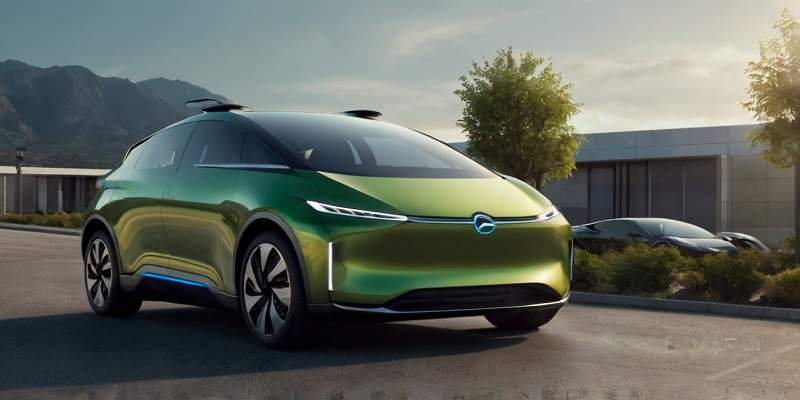Urban mobility is undergoing a significant transformation, thanks to the rise of electric vehicles (EVs). Cities worldwide are embracing EVs as a viable and sustainable alternative to traditional internal combustion engine (ICE) vehicles. This shift is not only changing how we move within urban environments but also influencing urban planning, air quality, and the overall quality of life. In this article, we will explore how electric vehicles are redefining urban mobility, their benefits, challenges, and the future prospects of this transformative technology.
The Rise of Electric Vehicles
Electric vehicles have been around for over a century, but it is only in recent years that they have gained significant traction. Several factors have contributed to this resurgence. Firstly, advances in battery technology have made EVs more affordable and capable of longer ranges. Secondly, growing environmental concerns and stringent emission regulations have pushed automakers and consumers towards cleaner alternatives. Lastly, government incentives and investments in charging infrastructure have made EV adoption more feasible.
Technological Advancements
The development of lithium-ion batteries has been a game-changer for the EV industry. These batteries offer higher energy density, longer life cycles, and faster charging times compared to previous technologies. Moreover, continuous research and development are leading to even more efficient and cost-effective solutions, such as solid-state batteries. These advancements are crucial for making EVs more accessible to the masses.
Environmental Benefits
One of the primary motivations for adopting electric vehicles is their potential to reduce greenhouse gas emissions and improve air quality. Unlike ICE vehicles, EVs produce zero tailpipe emissions. This means that they do not emit pollutants such as carbon dioxide (CO2), nitrogen oxides (NOx), and particulate matter (PM), which are harmful to both human health and the environment. By reducing these emissions, EVs can play a significant role in mitigating climate change and improving urban air quality.
Impact on Urban Planning
The integration of electric vehicles into urban environments is prompting a reevaluation of traditional urban planning strategies. As EV adoption increases, cities must adapt to accommodate the unique requirements of these vehicles.
Charging Infrastructure
A robust and accessible charging infrastructure is essential for the widespread adoption of electric vehicles. Urban planners are increasingly focusing on the development of public and private charging stations. This includes installing chargers in residential areas, commercial zones, and public spaces such as parking lots and streets. Additionally, fast-charging stations are being deployed along major highways and transit corridors to facilitate long-distance travel.
Smart Grids and Energy Management
The rise of electric vehicles also necessitates advancements in energy management systems. Smart grids, which use digital technology to monitor and manage electricity demand, are becoming increasingly important. These grids can optimize the distribution of electricity, ensure efficient charging of EVs, and integrate renewable energy sources. Moreover, vehicle-to-grid (V2G) technology allows EVs to feed electricity back into the grid, providing a valuable resource during peak demand periods.
Economic and Social Implications
The shift towards electric vehicles has significant economic and social implications. It affects various aspects of society, from job creation to public health and equity.
Job Creation and Industry Growth
The EV industry is creating new job opportunities in manufacturing, research and development, and infrastructure development. Automakers are investing heavily in EV production, leading to the establishment of new factories and supply chains. Additionally, the need for charging infrastructure is driving growth in the construction and energy sectors. This transition is not only fostering economic growth but also positioning countries as leaders in the emerging green economy.
Public Health and Quality of Life
Electric vehicles contribute to improved public health by reducing air pollution. Cities with high levels of air pollution often experience higher rates of respiratory and cardiovascular diseases. By decreasing emissions, EVs can help mitigate these health issues, leading to a better quality of life for urban residents. Furthermore, EVs are generally quieter than ICE vehicles, which can reduce noise pollution and enhance the urban living experience.
Equity and Accessibility
Ensuring that the benefits of electric vehicles are accessible to all segments of society is crucial. This includes making EVs affordable and ensuring that charging infrastructure is available in underserved communities. Government policies and incentives can play a vital role in promoting equity in EV adoption. Additionally, car-sharing programs and public transportation systems that incorporate electric vehicles can provide affordable and sustainable mobility options for everyone.
Challenges and Solutions
While the benefits of electric vehicles are clear, several challenges must be addressed to facilitate their widespread adoption.
Range Anxiety
Range anxiety, or the fear of running out of battery power before reaching a charging station, is a common concern among potential EV buyers. To alleviate this, automakers are developing EVs with longer ranges, and cities are expanding charging networks. Moreover, advancements in battery technology are continuously improving the range and efficiency of electric vehicles.
Charging Time
Charging time is another significant concern for EV users. While home charging is convenient for overnight replenishment, public fast-charging stations are necessary for quick top-ups during the day. Innovations such as ultra-fast chargers and wireless charging technology are being developed to reduce charging times and enhance convenience.
Initial Cost
The initial cost of electric vehicles can be higher than that of traditional ICE vehicles. However, this cost is decreasing as battery prices drop and production scales up. Additionally, government incentives, such as tax credits and rebates, can offset the initial purchase price, making EVs more affordable for consumers.
Grid Capacity
The increased demand for electricity due to EV charging can strain the power grid. To address this, utilities are investing in grid upgrades and smart grid technologies. Furthermore, the integration of renewable energy sources, such as solar and wind power, can support the additional load and contribute to a cleaner energy mix.
The Future of Urban Mobility
The future of urban mobility is likely to be shaped by electric vehicles and related technologies. Several trends and developments indicate the direction in which this transformation is heading.
Autonomous Electric Vehicles
Autonomous electric vehicles (AEVs) have the potential to revolutionize urban transportation. These self-driving vehicles can enhance safety, reduce traffic congestion, and provide more efficient mobility solutions. Moreover, AEVs can be integrated into public transportation systems, offering convenient and sustainable alternatives to private car ownership.
Shared Mobility
The concept of shared mobility, which includes car-sharing, ride-hailing, and micro-mobility solutions like electric scooters and bikes, is gaining popularity. Electric vehicles are well-suited for these services due to their lower operating costs and environmental benefits. Shared mobility can reduce the number of vehicles on the road, alleviate traffic congestion, and make urban transportation more sustainable.
Policy and Regulation
Government policies and regulations will play a crucial role in shaping the future of urban mobility. Supportive policies, such as subsidies for EV purchases, investments in charging infrastructure, and emission regulations, can accelerate the transition to electric vehicles. Additionally, urban planning and zoning regulations can encourage the development of EV-friendly infrastructure.
Conclusion
Electric vehicles are redefining urban mobility in profound ways. They offer numerous environmental, economic, and social benefits, making cities cleaner, quieter, and more sustainable. However, to fully realize the potential of EVs, it is essential to address the challenges associated with their adoption. This requires a collaborative effort from governments, automakers, urban planners, and consumers. As technology continues to advance and more cities embrace electric vehicles, the future of urban mobility looks promisingly green and efficient.



































